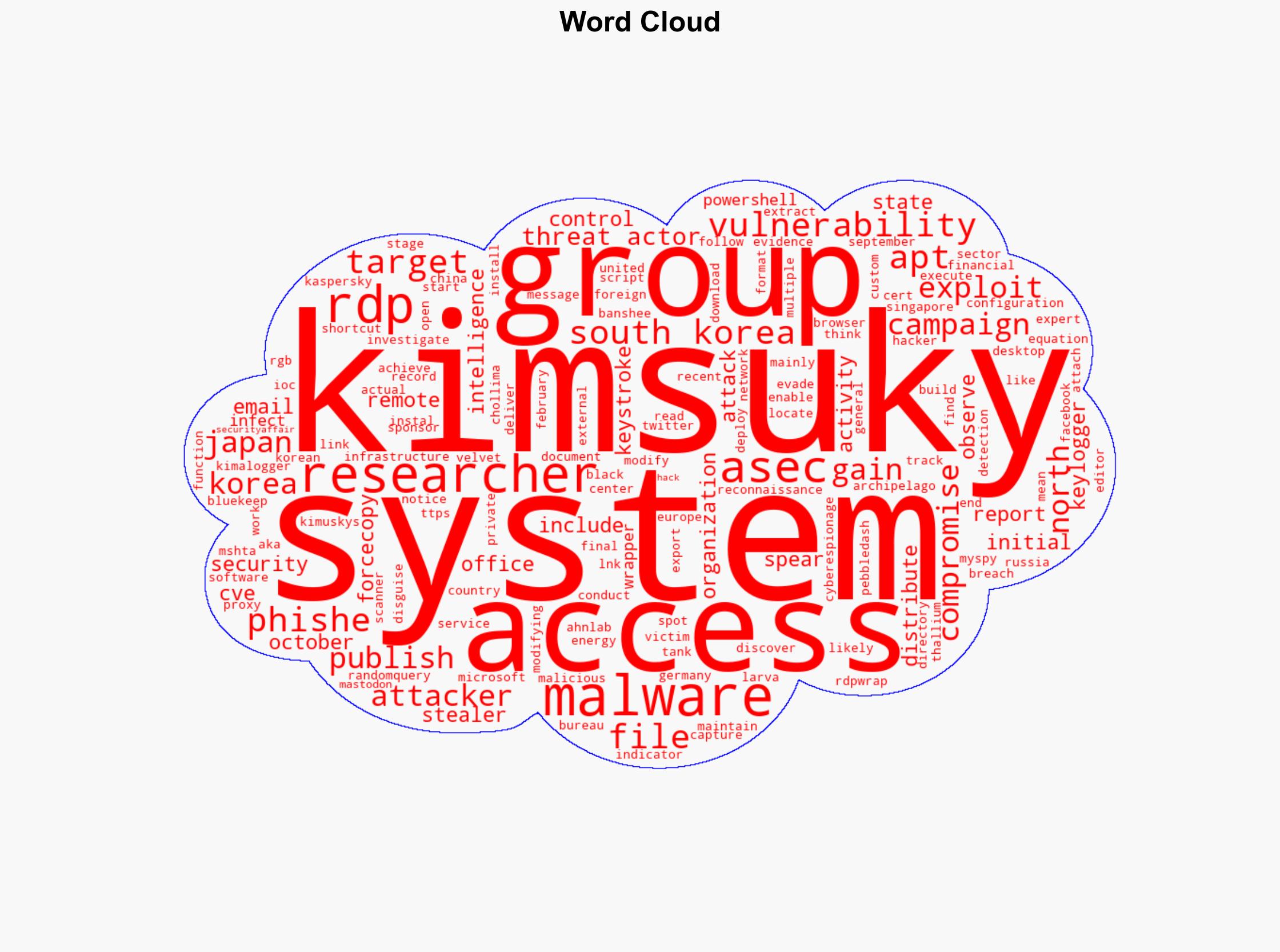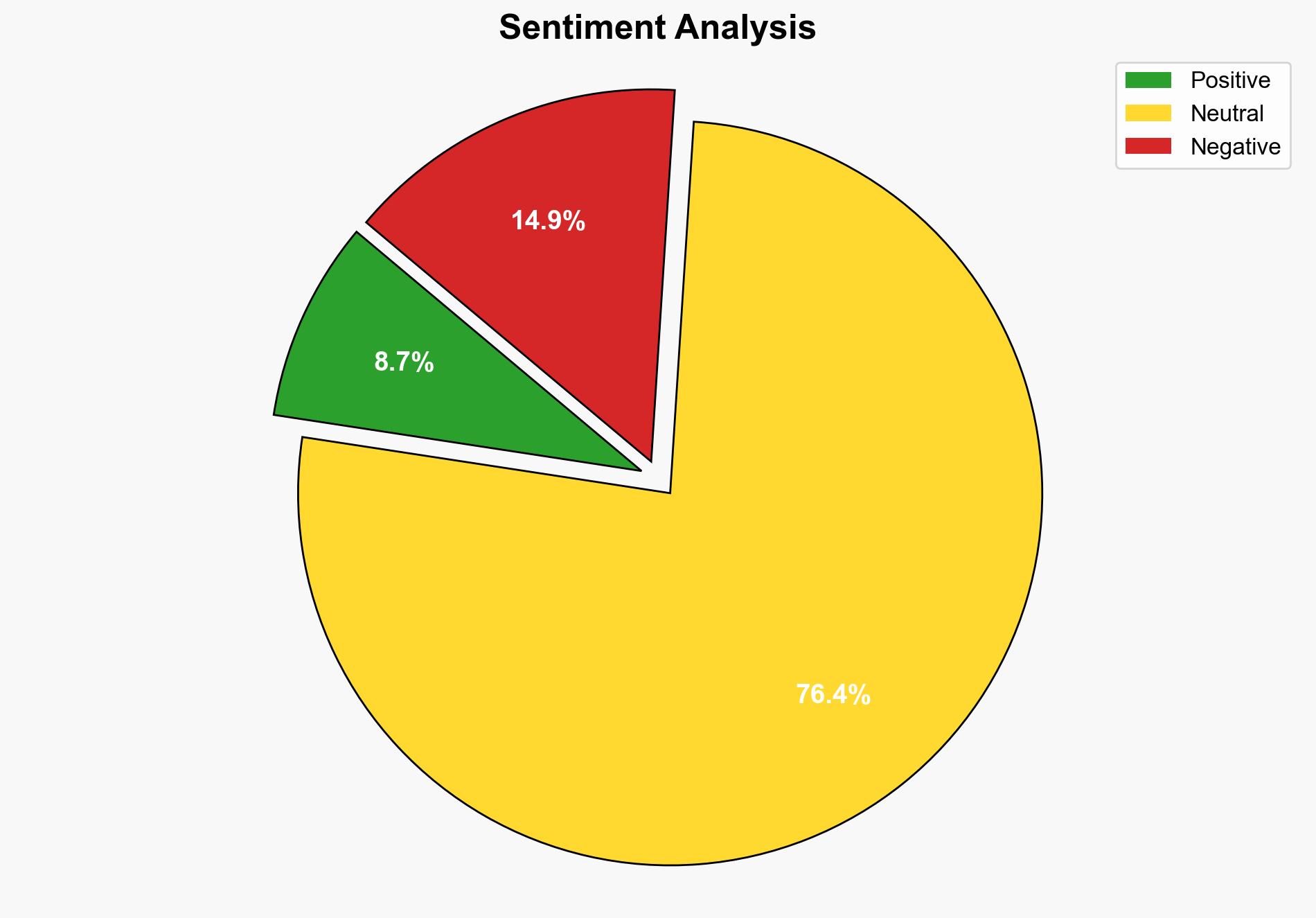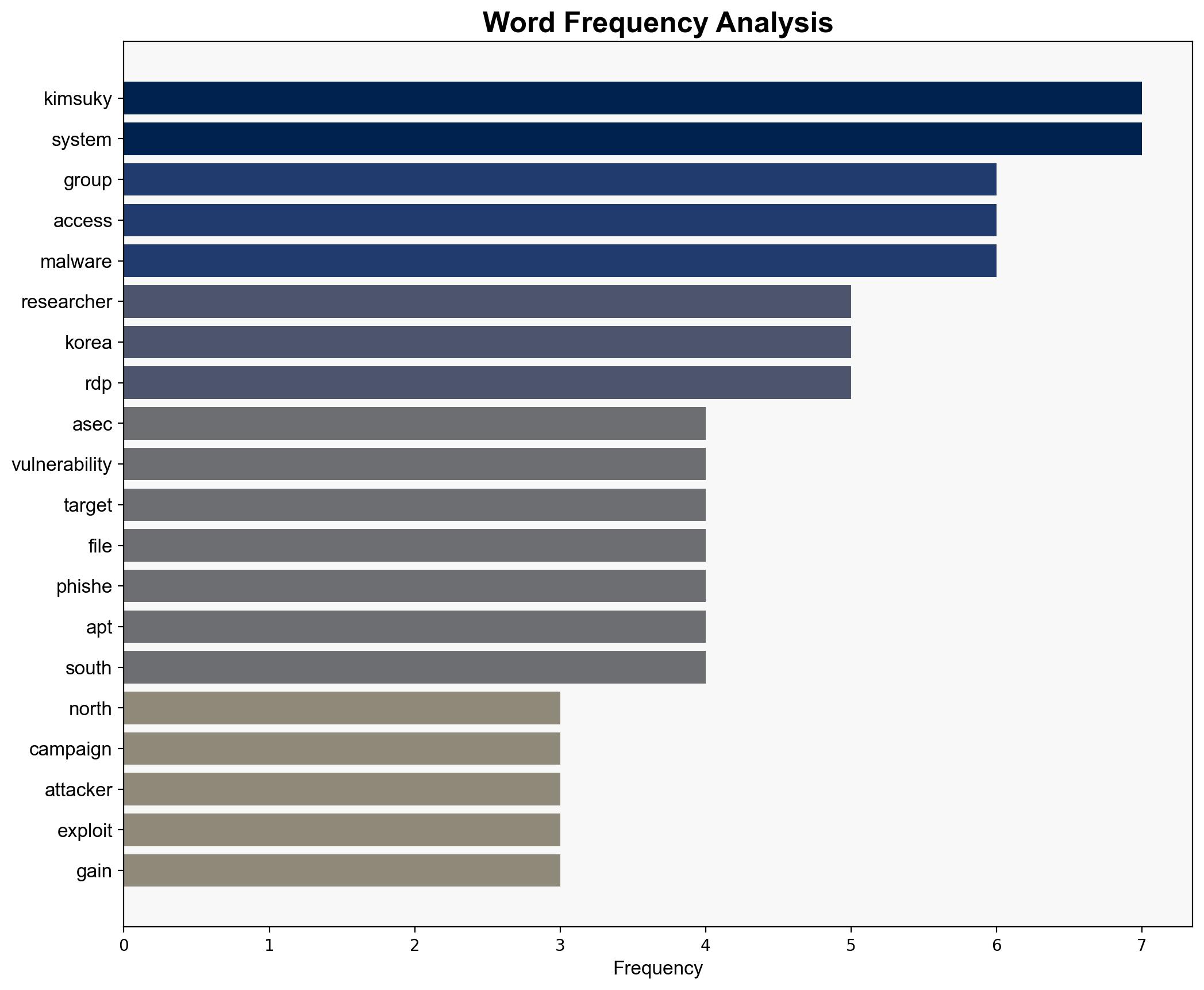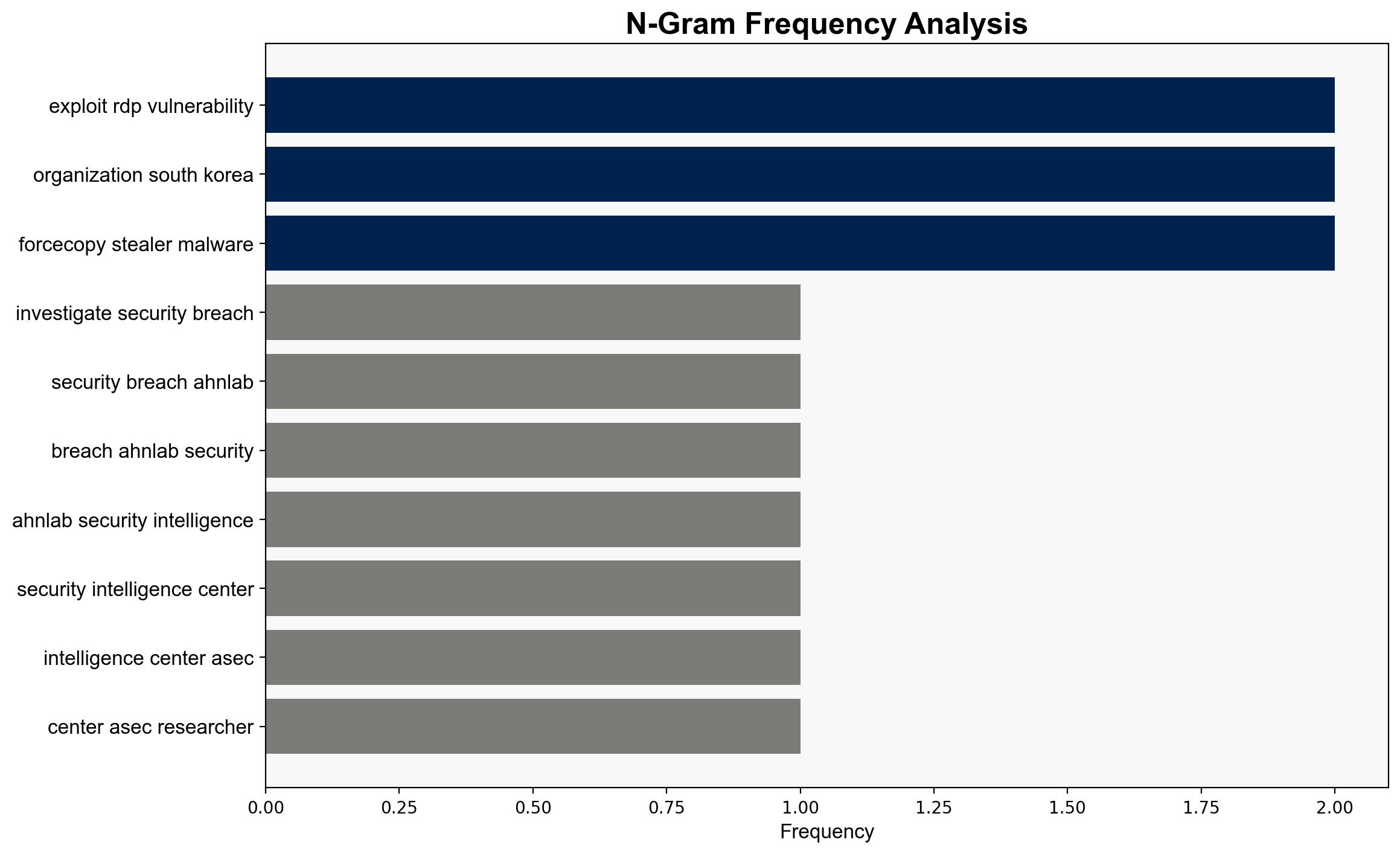Kimsuky APT exploited BlueKeep RDP flaw in attacks against South Korea and Japan – Securityaffairs.com
Published on: 2025-04-21
Intelligence Report: Kimsuky APT Exploited BlueKeep RDP Flaw in Attacks Against South Korea and Japan
1. BLUF (Bottom Line Up Front)
The Kimsuky Advanced Persistent Threat (APT) group, linked to North Korea, has been identified exploiting the BlueKeep RDP vulnerability (CVE-2019-0708) to gain unauthorized access to systems in South Korea and Japan. This campaign, tracked as “Larva,” involves distributing malware through phishing emails and exploiting vulnerabilities in Microsoft Office. Immediate strengthening of cybersecurity measures is recommended to mitigate further risks.
2. Detailed Analysis
The following structured analytic techniques have been applied to ensure methodological consistency:
Analysis of Competing Hypotheses (ACH)
Evidence strongly supports the hypothesis that Kimsuky is leveraging the BlueKeep vulnerability to conduct cyber espionage. Alternative hypotheses, such as involvement by other state-sponsored groups, are less supported by current evidence.
SWOT Analysis
Strengths: Advanced technical capabilities and established infrastructure for cyber operations.
Weaknesses: Potential over-reliance on known vulnerabilities that may soon be patched.
Opportunities: Exploiting unpatched systems in strategic sectors.
Threats: Increased international scrutiny and potential retaliatory cyber operations.
Indicators Development
Key indicators include increased phishing activity, use of RDP vulnerabilities, and deployment of custom malware such as MySpy and Kimalogger. Monitoring these indicators can help detect ongoing or emerging threats.
3. Implications and Strategic Risks
The exploitation of BlueKeep by Kimsuky underscores systemic vulnerabilities in critical infrastructure, posing risks to national security and economic stability. The potential for cascading effects includes disruption of essential services and heightened geopolitical tensions.
4. Recommendations and Outlook
- Implement immediate patching of RDP vulnerabilities and enhance email filtering to prevent phishing attacks.
- Conduct regular cybersecurity audits and training to bolster defense mechanisms.
- Scenario Projections:
- Best Case: Rapid patching and improved defenses lead to a significant reduction in successful intrusions.
- Worst Case: Continued exploitation results in widespread data breaches and operational disruptions.
- Most Likely: Incremental improvements in cybersecurity posture mitigate some risks, but persistent threats remain.
5. Key Individuals and Entities
The report does not specify individual names but focuses on the Kimsuky APT group as the primary entity of concern.
6. Thematic Tags
(‘national security threats, cybersecurity, counter-terrorism, regional focus’, ‘cybersecurity’, ‘counter-terrorism’, ‘regional focus’)




